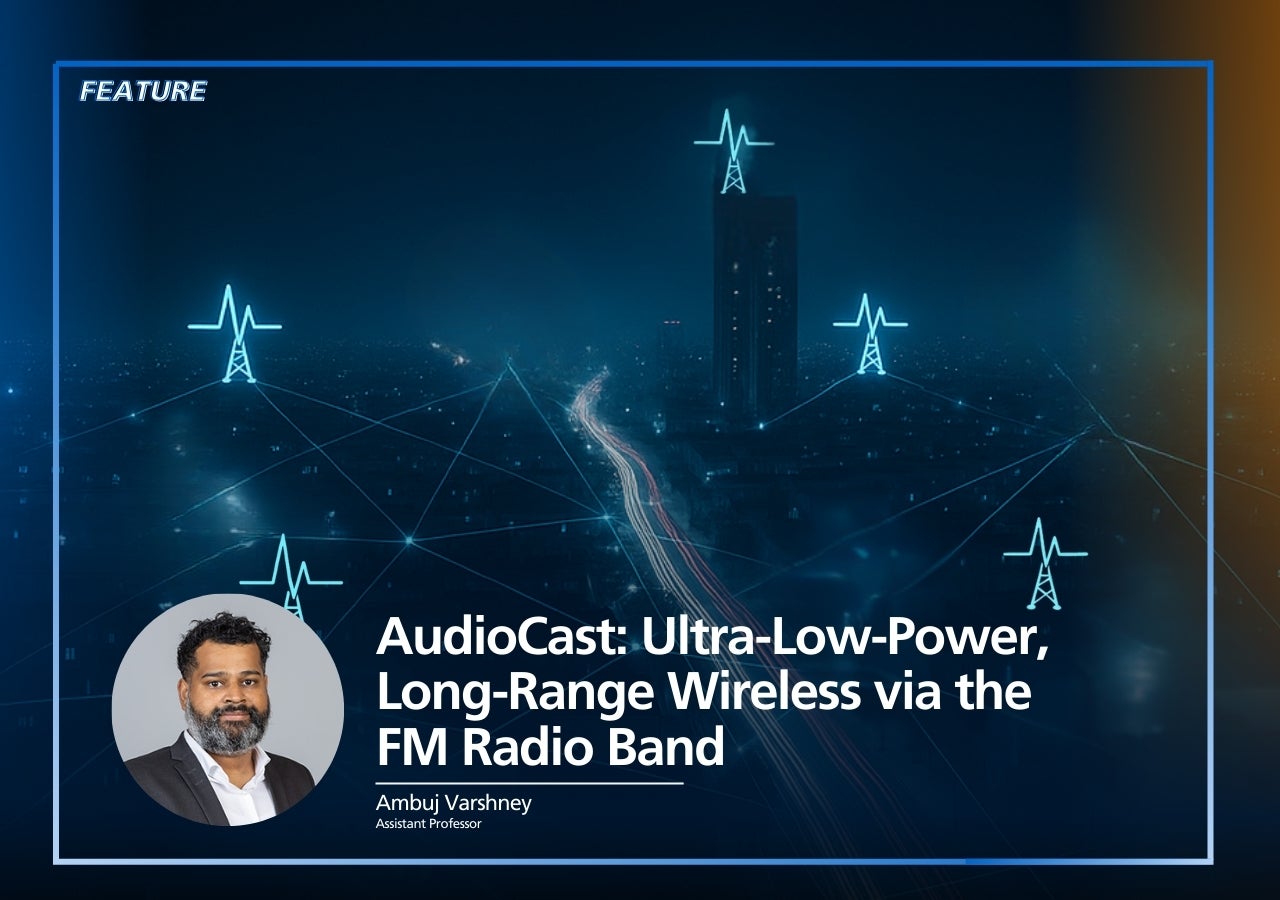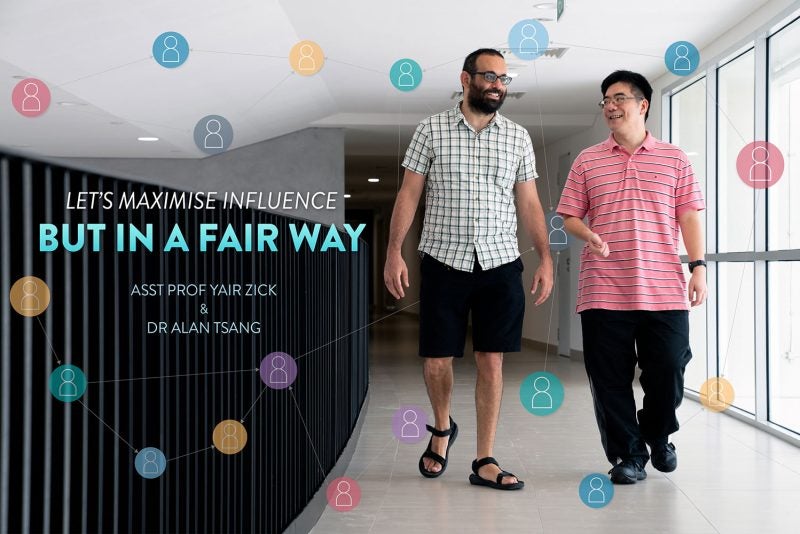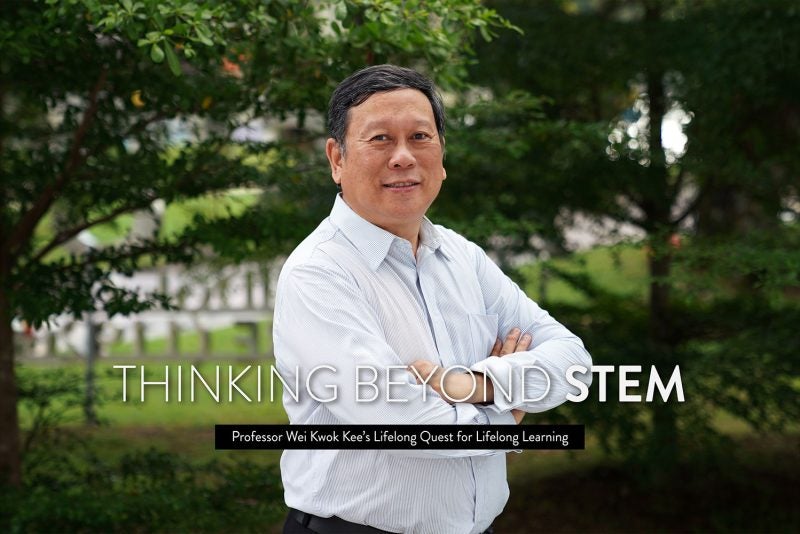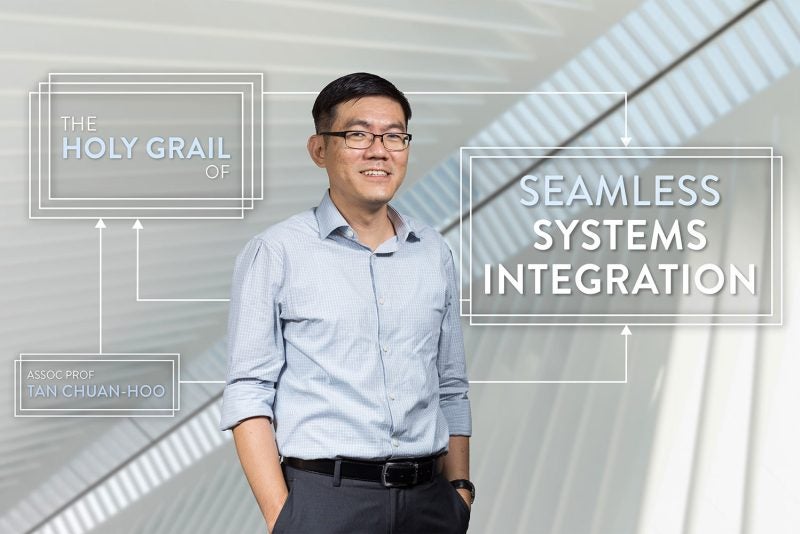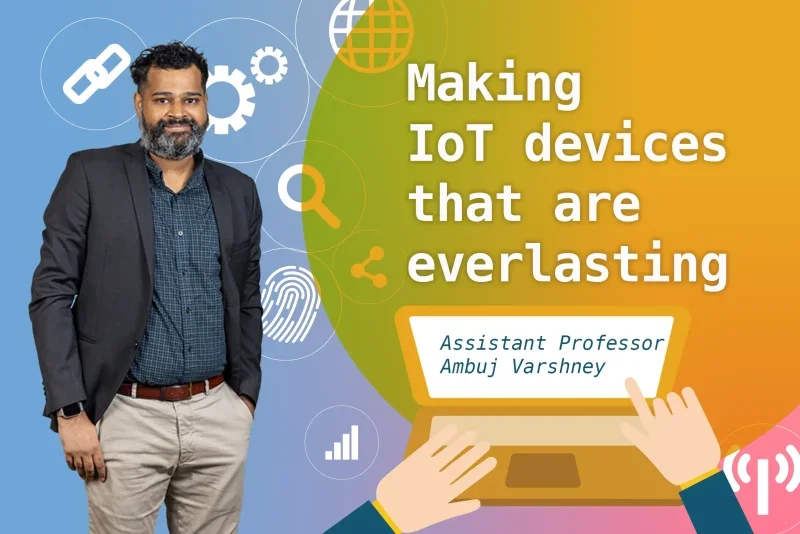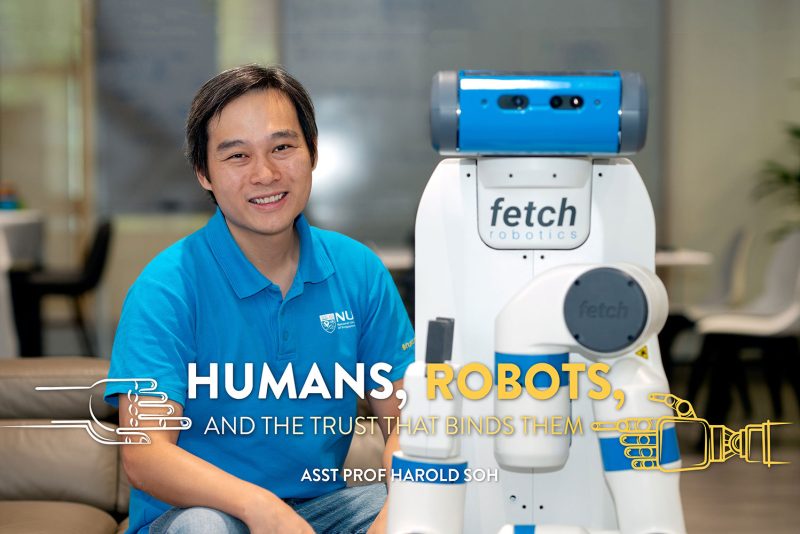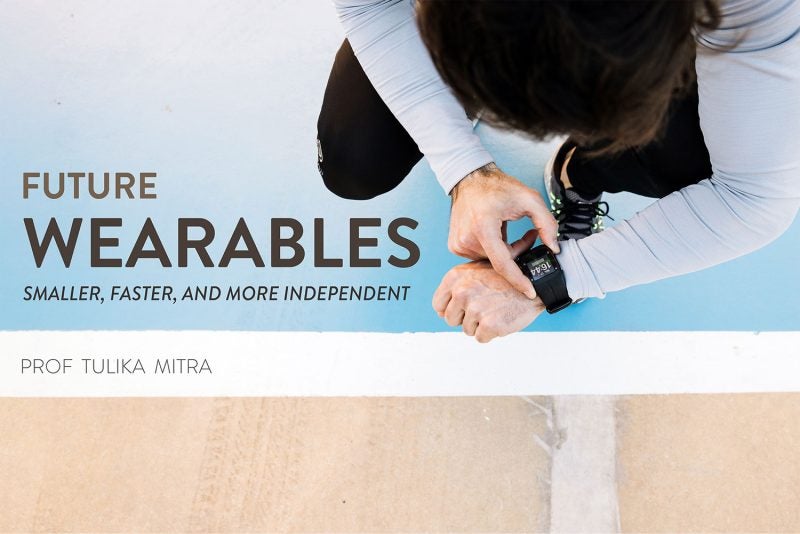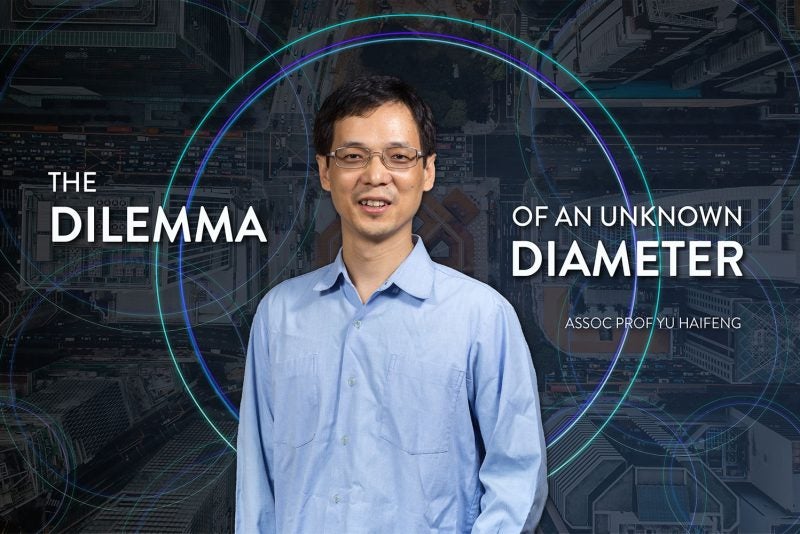Reimagining Connectivity:
How AudioCast Delivers Ultra-Low-Power Wireless Communication at Scale
In our increasingly connected world, the buzz of wireless signals is omnipresent – Wi-Fi in our homes, Bluetooth in our headphones, cellular networks in our pockets. But hidden beneath this convenience lies a serious constraint: wireless communication drains power. And for embedded systems – those tiny, task-specific computers embedded in smart devices everywhere from streetlights to wearable health trackers – this power cost becomes a major design and deployment bottleneck.
These embedded systems are meant to be invisible, passive, and persistent. They’re monitoring air quality, tracking usage patterns, sensing temperature or motion. But when it comes to transmitting that data wirelessly, their small batteries just can’t keep up. Radio transmission – especially generating and amplifying signals – requires relatively high energy, shortening battery life and limiting where and how long these systems can operate. Worse still, the radio spectrum they rely on (especially the 2.4 GHz and 5 GHz bands) is getting congested and noisy.
Enter AudioCast – a radically different approach to wireless communication for embedded devices. Developed by a Assistant Professor Ambuj Varshney and his team at the WEISER (Wireless, Embedded Intelligence, Sensing, and Emerging Technologies) group at the National University of Singapore, AudioCast introduces a new class of audio-broadcasting low-power tags that operate outside conventional radio spectrum – by leveraging the FM radio spectrum.
This isn’t just a creative workaround. It’s a full-stack rethinking of how small devices talk, built from the circuit level up. It marries century-old radio infrastructure with modern ultra-low-power electronics, and in doing so, achieves something remarkable: communication ranges of up to 130 meters on just 200 microwatts of power – thousands of times lower than Bluetooth or Wi-Fi.
Let’s unpack how AudioCast works, why it matters, and what it could mean for the future of connected devices.
The Wireless Bottleneck: Why Power Still Rules
For most embedded devices, the wireless transmitter is the single biggest power consumer. Generating radio frequency (RF) signals – especially at the high frequencies common to Wi-Fi and Bluetooth – demands significant current. That’s fine for your phone or laptop, which can be recharged daily. But for a tiny environmental sensor, possibly placed outdoors or inside infrastructure, recharging every day – or even every month – is a dealbreaker.
Alternative approaches like backscatter communication have tried to address this by reflecting existing ambient radio signals, rather than generating new ones. RFID systems and some low-power IoT networks use this trick. But backscatter has its own issues: weak signals, short range (often less than 10 meters), and dependency on a nearby power-hungry emitter. In practice, it means these systems aren’t truly autonomous, this was rason for less success of backscatter systems in real-world and failure of some startups.
AudioCast sidesteps this entire class of problems.
A Forgotten Frequency: The Untapped Potential of FM Radio
Instead of crowding into the noisy, congested 2.4 GHz band, AudioCast operates in the FM broadcast band – the same 88–108 MHz range used by old-school analog radio.
Why FM? For one, FM radio waves propagate far better than high-frequency signals. At lower frequencies, radio waves travel farther and penetrate walls more effectively – using significantly less power. Tests have shown that FM signals lose over 300 times less power over distance compared to typical Wi-Fi.
And while FM radio may feel outdated, the infrastructure remains widespread: car stereos, home radios, even software-defined radio (SDR) dongles can receive FM. In a world focused on ever-higher frequencies, the FM band is ironically becoming underutilized – prime real estate for creative new uses.
Beyond Backscatter: The Innovation of Tunnel Diode Oscillators
The technical magic of AudioCast lies in its use of tunnel diode oscillators (TDOs) – a circuit component that, thanks to its unique electrical behavior, can generate radio frequency signals at exceptionally low voltages and currents.
TDOs are quirky components. They exhibit negative resistance at very low voltages – allowing them to generate oscillations (radio waves). AudioCast capitalizes on this, creating standalone low-power transmitters that don’t rely on external signals or can work on solely energy harvesting if required. They’re self-sufficient and ultra-efficient.
But TDOs are notoriously unstable, prone to frequency drift and sensitive to nearby electromagnetic interference. The researchers behind AudioCast tackled this by designing around three principles:
- Operating at Low Frequencies: FM-band operation makes the TDO naturally more stable than higher-frequency implementations.
- Stable Biasing Circuit: A precisely tuned voltage regulator provides a consistent bias current to the diode, eliminating fluctuations.
- RF Isolation and Shielding: Metal shielding and RF isolators dramatically reduce interference from nearby electronics or even physical movement.
Together, these make the TDO robust and stable enough for reliable FM-band communication.
Modulating the Message: From Digital Data to FM Audio
Once you have a stable oscillator, you still need to encode data onto the signal. AudioCast does this through a clever form of self-modulation, where the message data directly influences the oscillation frequency of the TDO. This allows frequency modulation (FM) without the need for traditional mixers or modulation circuits.
It works like musical Morse code: each bit or byte of data is represented by a specific tone (or frequency), which can then be picked up by any standard FM radio receiver. In tests, the system reached 368 bits per second – sufficient for most sensor data or even low-rate speech. And the potential exists to increase that to 10.7 kbps using stereo channels and faster decoding methods.
Perhaps most importantly, these transmissions can be picked up by commodity devices: your car radio, an FM tuner, or even an SDR plugged into a laptop or phone. No new infrastructure required.
Real-World Performance: Tiny Power, Big Range
The system’s energy consumption is incredibly low – under 200 microwatts, including the transmitter, sensor interface, and modulation. That’s two to three orders of magnitude less than BLE, LoRa, or Wi-Fi.
This translates into exceptional battery life. A coin-sized CR2032 battery could power an AudioCast tag for over 140 days continuously. For more intermittent transmissions (like hourly updates), that extends to years.
And the range is impressive. AudioCast can reach:
- 130 meters in outdoor line-of-sight conditions,
- 110 meters in semi-obstructed environments,
- 45 meters indoors with moderate interference,
- and 14 meters through multiple walls in office environments.
Even with a low data rate, the signal is highly reliable – delivering >90% packet reception rates across test scenarios.
Applications: What AudioCast Enables
The low power, long range, and compatibility with existing receivers make AudioCast a flexible platform for real-world deployment. The researchers demonstrated three compelling applications:
- Wireless Voice Tracking
A microphone directly modulates the TDO to transmit speech – no amplifier and analog-to-digital converter required. The voice signal is then picked up by an FM receiver and sent to a more powerful processor (like a smartphone) for automatic speech recognition (ASR).
Use case: wearable voice assistants, passive dictation tools, or health-monitoring wearables – possibly embedded in jewelry or clothing. They even tested using a silver necklace as an antenna, with sufficient signal strength for nearby FM receivers.
-
- Gesture Recognition
A light sensor (photoresistor) modulates the AudioCast signal in response to hand gestures. Different gestures create different frequency patterns, which are decoded on the receiver side using basic machine learning.
Use case: touchless interfaces for appliances or smart home controls – activated by simple gestures without cameras or high-power sensors.
- Gesture Recognition
- Data Backhauling via Vehicles
Imagine remote environmental sensors deployed across a large farm or city. Instead of relying on cellular or Wi-Fi coverage, cars or buses equipped with FM receivers (or SDRs) act as mobile collectors. As they pass by, they pick up the broadcasted data and upload it once they reconnect to the Internet.
Use case: opportunistic connectivity in remote or infrastructure-poor environments, from agriculture to wildlife monitoring to disaster recovery.
Challenges and Future Directions
Despite its promise, AudioCast isn’t without limitations.
- Tunnel Diodes are not widely manufactured today. Future adoption depends on renewed commercial interest or custom fabrication.
- One-Way Communication: AudioCast currently transmits data outward but cannot receive commands or perform two-way communication – a limitation for some use cases.
- Data Rate Ceiling: While 368 bps to 10 kbps covers many sensor applications, high-bandwidth needs (e.g., video) are out of reach – at least with commodity FM receivers.
Still, the architecture is extensible. More advanced modulation (e.g., OFDM), SDR-based receivers, or custom decoding pipelines could push these boundaries.
A New Foundation for Ambient Computing
AudioCast presents a fundamentally new way to think about connectivity. It’s not just a better low-power protocol – it’s an entirely different design philosophy for embedded systems.
Instead of pushing for higher data rates or tighter integration with existing radio stacks, AudioCast looks sideways – finding value in forgotten spectrum, simple analog modulation, and radical power efficiency. It suggests a world where infrastructure-light, battery-friendly, and human-compatible devices can coexist with minimal environmental and operational cost.
That’s not just good engineering. It’s a blueprint for the kind of ambient, ubiquitous computing that could finally bring the vision of smart environments, intelligent cities, and sustainable IoT into everyday life.
Imagine a future where sensors last years on a button cell, where voice interfaces are hidden in fabric, and where devices talk not through towers and clouds, but directly into the radio around them.
AudioCast is a quiet revolution in how machines communicate – and the silence is powered by microwatts.
Further Reading: Rajashekar Reddy Chinthalapani, Dhairya Jigar Shah, Nobel Ang, and Ambuj Varshney. 2025. AudioCast: Enabling Ubiquitous Connectivity for Embedded Systems through Audio-broadcasting Low-power Tags. Proc. ACM Interact. Mob. Wearable Ubiquitous Technol. 9, 2, Article 27 (June 2025), 32 pages. https://doi.org/10.1145/3729471

